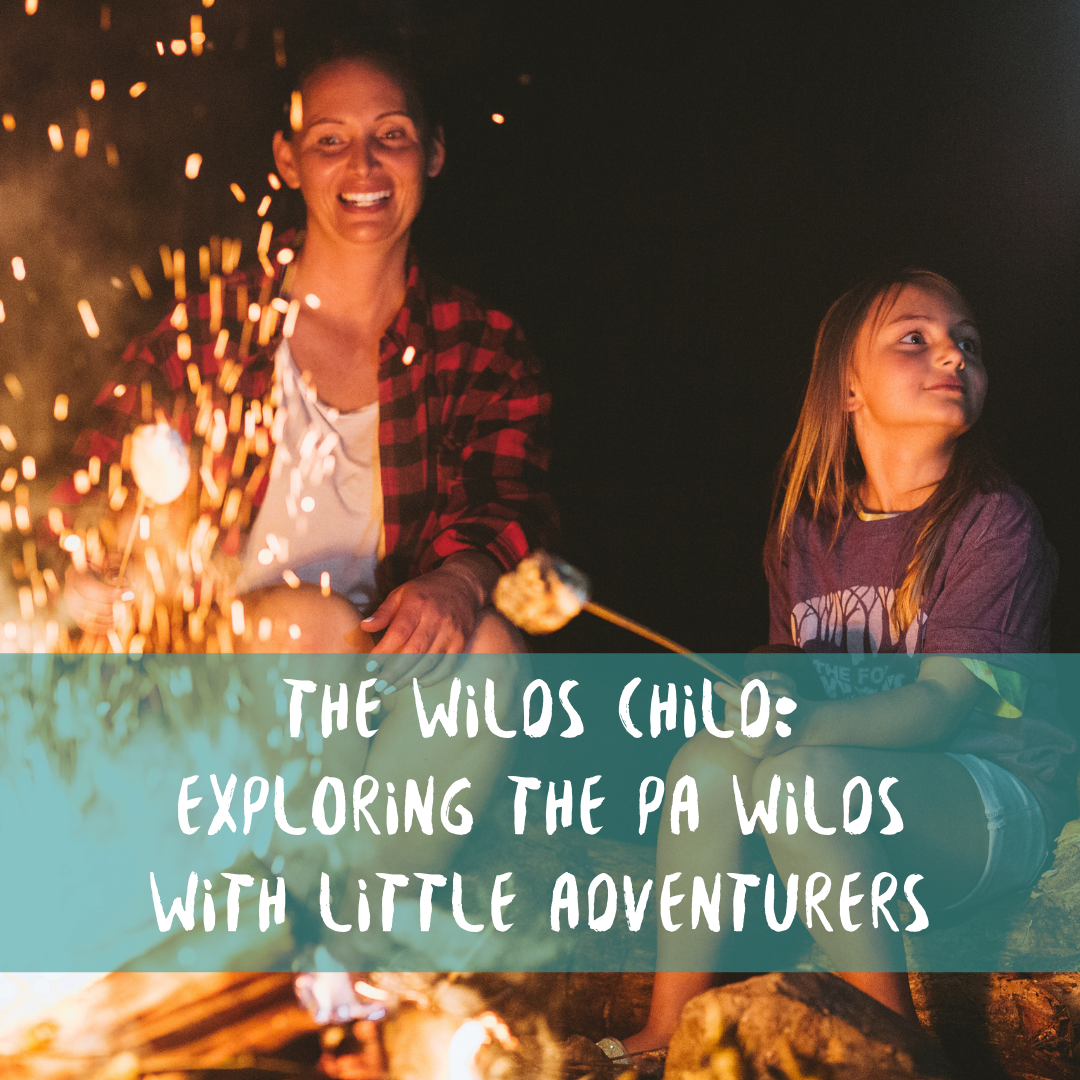Wilds Child: The Elk Country Visitor Center
If you ask my two young children what sound an elk makes, they will look at you with a mischievous glint in their eyes, grin, and let out a low pitched grunt or two. It’s one of their favorite tricks; they already know that most children don’t know what sound an elk makes, and it delights them to throw a grunt into the mix between rooster crows and tiger growls. To be clear, their calls are far from perfect – too low, abrupt, and never quite managing to reach the high cry at the crescendo that characterizes an elk call – but certainly my boys know how to put forth their best elk bugle.
That’s because both of them were born and raised in Ridgway, Pennsylvania, the seat of Elk County, located in the heart of the PA Wilds landscape “Elk Country.” There are statues of elk in many of our buildings, large bull elk whose heads are thrown back and jaws jutted forward in a silent bugle.
Where there aren’t statues there are often elk mounts – large, taxidermied elk heads that rise from the wall on impressive barrel chests to reveal dark eyes and, usually, a massive set of antlers. Managing to bag an elk is still an impressive feat, even for hunters in our region, and elk with long main beams, many points, and a lengthy spread – aka big antlers – are the grandest trophy of them all.
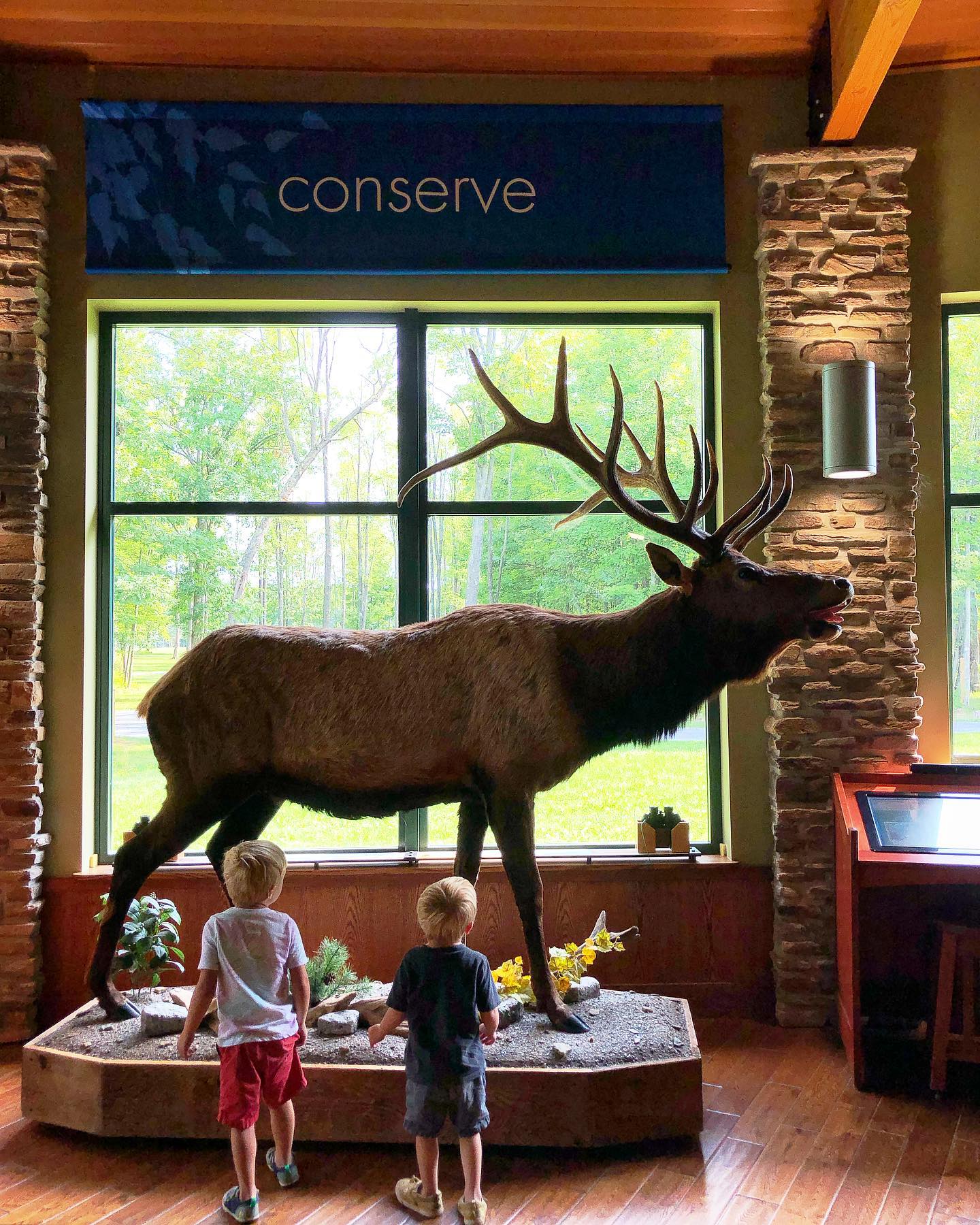
Of course, you don’t need to hunt the elk to take home a majestic antler or two. If you take a walk in the forests of Elk Country in the early spring, you’re likely to find discarded antlers sans 700lb cervid. Elk shed them annually after mating season, and so you’ll also find them in near excess in our neck of the woods. They are so plentiful that “shed-hunting” is a common practice among our most enthusiastic outdoorsmen, and it is done not with a gun but with a keen eye and patient step.
So my boys know elk. In fact, they know a lot about most Pennsylvania animals – the white tail deer (our state animal), the ruffed grouse (our state bird), and the hellbender (our state disconcertedly-large amphibian) – but they are always excited to learn more. So when we awoke one cool summer morning to fog and a light drizzle, I knew the perfect rainy day activity was a long car ride on winding roads to our nearest nature center – The Elk Country Visitor Center.
Located in Benezette, PA, the Elk Country Visitor Center is a world-class education and wildlife-viewing center. If you go at the right time of year – fall and spring – and the right time of day — dawn or dusk – you are likely to be treated to grand views of elk harems – yup, they’re called harems! – including dozens of doe elk grazing in meadows along with their massive bull elk counterparts. On the drive up, it isn’t uncommon to stumble upon elk herds crossing your path on the road or standing in a residential neighborhood (the elk are notorious for being unwelcome guests in folks’ gardens). That’s because Elk Country is home to the largest free-roaming elk herd in the northeastern United States.
But even at midday in the summer – when the elk are almost certainly bedded down in the shade, hidden from view – the Visitor Center is decidedly worth the trip.
Even before we were through the large main doors, my boys were impressed. “Look mommy!” my oldest shouted, pointing to the carved antlers that served as door handles. “They’re antlers!”
“I see that,” I responded smiling, trying to pull my toddler away from where he was gawking at the large statue of an elk in amazement. Lifesize, the dark statue was so massive that both of my boys and I could have easily ridden on the beast’s back. We were all itching to get inside.
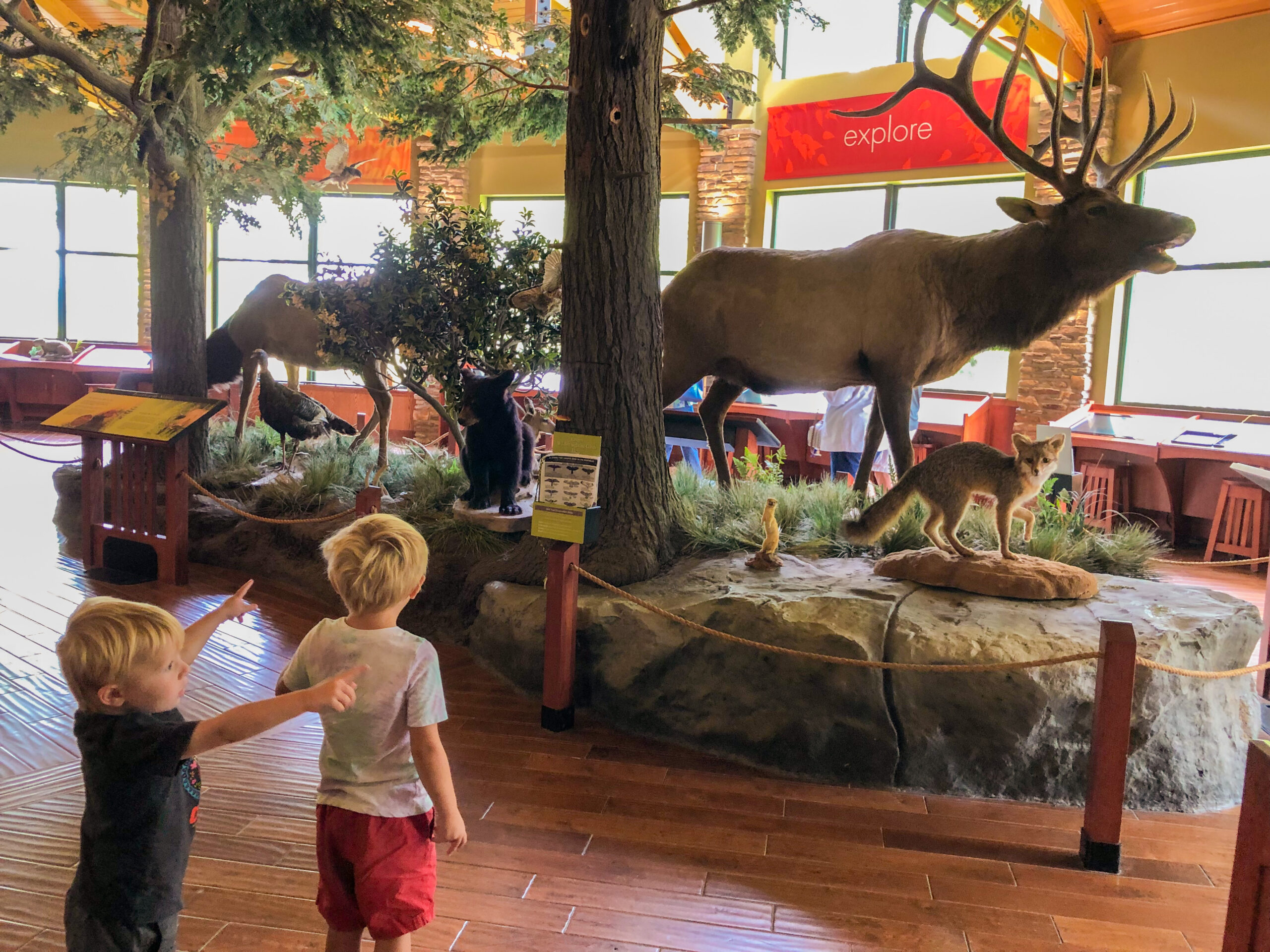
And inside did not disappoint. Both boys ran straight through the gift shop bursting with clothes, books, toys, and local treats to the Great Room where both shouted “whoa” in unison as they took in the display.
Three fully grown, life-sized elk mounts stood about the room – two bull elk and a cow. A calf was curled up in tall grass at his mother’s feet. All were shaded by two display trees that towered over them, stretching to the top of the log vaulted ceilings. Near the elk were other animal mounts, which my kids dutifully named one after the other. “Fox, turkey, snake,” my preschooler listed, pointing to each as he named them. My toddler listened attentively and made the animal sounds after their names were called: bark, gobble gobble, hiss. My preschooler glanced up at the trees: “woodpecker!” he called excitedly.
The animal display was flanked by interactive panels and touchscreen activities that my boys enthusiastically devoured. We did crayon rubbings of different animal tracks, took a bird identification quiz that my mini ornithologists passed with flying colors, and used binoculars to gaze out the wide, panoramic windows at the fields around us. We learned about the different foods animals eat, about local conservation and herd management efforts, and about the history of the elk in our region – specifically, about their reintroduction in the early 20th century after habitat loss and unregulated hunting wiped the native elk from our landscape.
Conservation is at the heart of the Visitor Center mission, and that is evidenced not just by the content they teach, but by the building itself, which is built with energy-efficient materials and designed to have the least impact possible on the natural ecosystem around it.
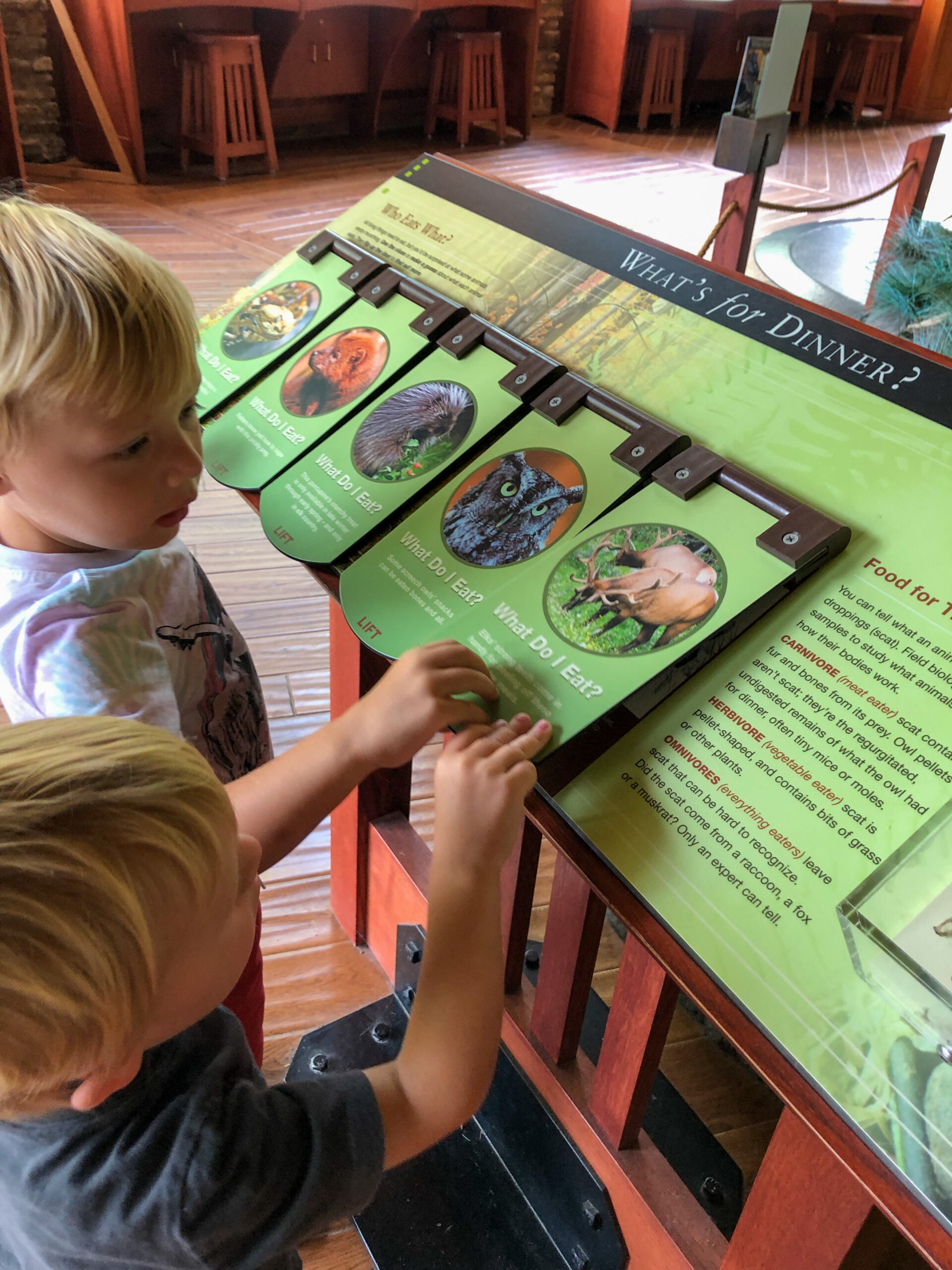
My children’s only complaint about the entire experience – and their largest complaint at all museums and educational centers – is how tantalizingly close those seemingly-cuddly-and-adorable-but-actually-fragile animal mounts are to desperately interested little hands.
I likely pulled my kids’ hands back from attempting to stroke an animal mount roughly a dozen times. Per animal. And I repeated, “We look with our eyes, not with our hands” dozens more. I explained that our hands have natural oils that can ruin the fur and that, if we touched them, the animals might not be around for other kids to enjoy. My kids were mostly unconvinced. Here were their favorite animals literally within reach and they definitely wanted to give even the largest bull elk a healthy snuggle. The parts of the exhibit that were safe to touch – including a large elk rack designed for demonstrating heft – helped take the edge off, but I knew they wanted nothing more than to pet all the animals they had been learning about since infancy.
But, in a way, that tension between proximity and distance was a lesson too. Having grown up in a rural community where wildlife are both plentiful and close, it can be difficult for people to maintain that essential barrier between wild animals and people – especially when elk are known to come waltzing through your begonias or walk out in front of your car during your morning commute. The popularity of elk viewing and interest in the herd’s expanding size have had complicated repercussions and have led to the Pennsylvania Game Commission’s increased effort to promote safe animal viewing practices.
The latest initiative, known as Elk Smart, was adopted in 2020 to help educate the public about the importance of safe animal viewing practices, including the importance of not feeding wild animals and maintaining appropriate distance when viewing. It was easy as a parent to blend the conversation about not touching the mounts with the larger lesson about enjoying animal viewing while giving the creatures healthy space.
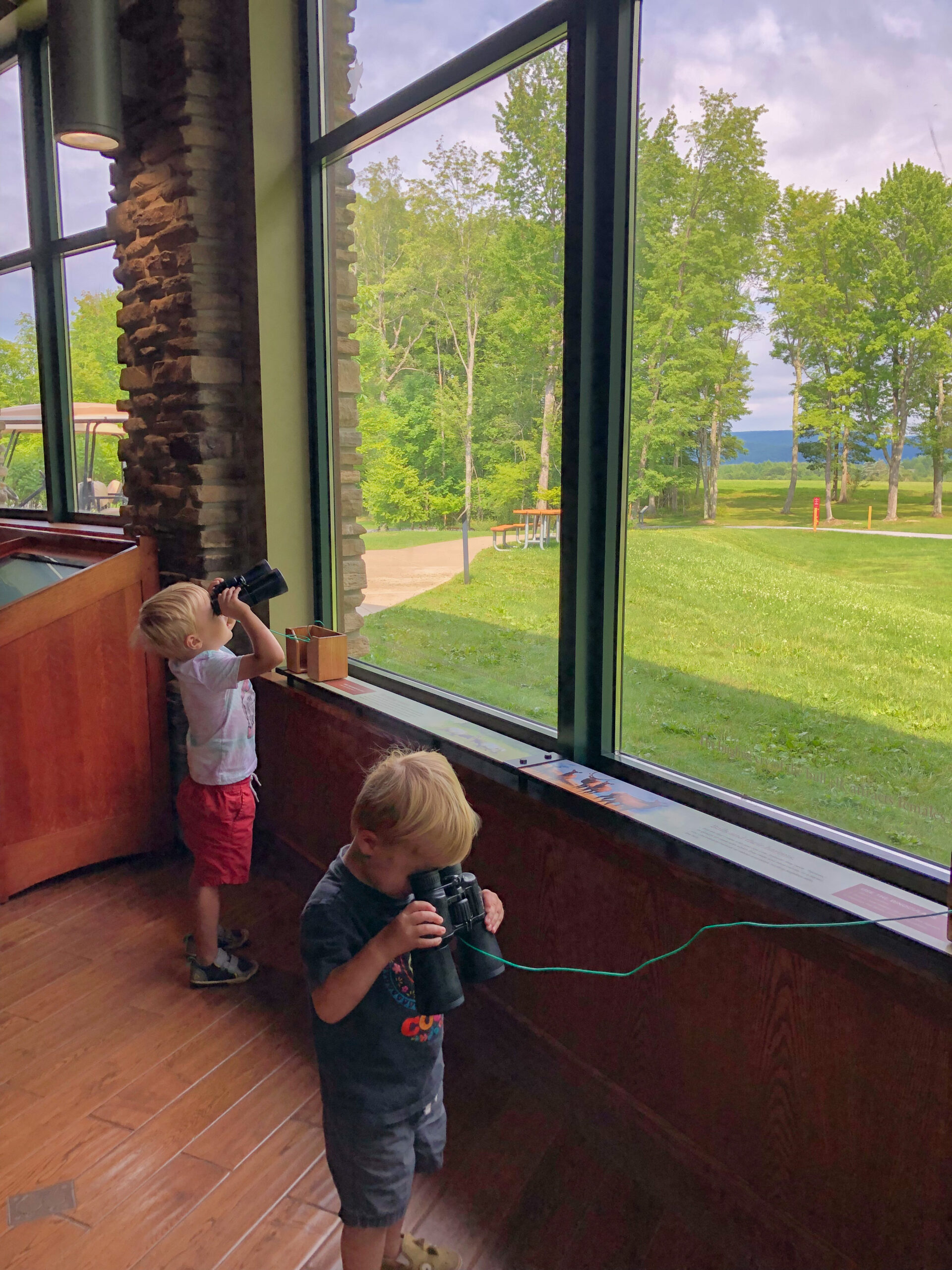
And the lesson was timely too. The same week that my boys and I traveled to the Elk Visitor Center, a neighbor found a rattlesnake in her backyard.
Although my boys will grow up in a town where everything from their post office to their school has animal mounts, and although my sons will grow up with a backyard teaming with wildlife, the lessons we gleaned from the Elk Country Visitor Center were important: we are not owners of the wildlife around us, not zookeepers or pet owners, but rather stewards of the animals, tasked with preserving their habitat and cohabitating alongside them in the wild spaces we call home.
About the Series:
The Wilds Child: Exploring the PA Wilds with Little Adventurers is a monthly series that features stories, travel tips, landscape recommendations, and the occasional piece of unsolicited parenting advice. Whether you’re a family in town for a visit or a local looking to show their own children your region’s rich heritage, let local writer, community organizer, and fellow-parent, Tia DeShong, help you plan your next adventure in the PA Wilds.
